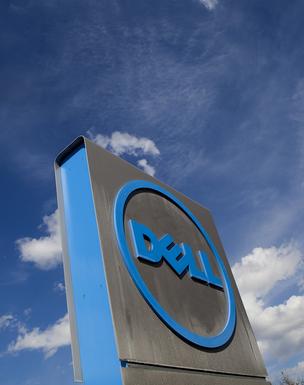Zev Laderman | Venturebeat
There’s more to cloud analytics than just saving costs.
When companies really know how to take advantage of cloud computing to increase profit and margin, they have the opportunity to achieve real cloud “nirvana.” The cloud can become a natural extension of their data center.
Here are five ways cloud usage analytics contribute to a company’s bottom line:
If clouds are able to scale on the fly to meet unforeseen or variable demand, companies can capture additional revenue that otherwise would not have been achievable. When demand flattens, or – as we have witnessed over the last few years with the global recession – often fluctuates or declines, it is critical to immediately scale back infrastructure and reduce costs to ensure the highest possible profit margin from new levels of demand.

Usage analytics allows users to see if their infrastructure is ready to scale to capture more revenue or if it should shrink to reduce unnecessary infrastructure cost. This approach increases the shareholder value of any company, as increasing profit directly impacts a company’s price/earnings ratio and grows a company’s valuation.
Enhancing resource efficiency
Usage analytics help users really profit from the cloud by showing how well they are using their cloud resources, what they actually need, and how they can use cloud resources better. A usage-based model can quickly take on a life of its own, since you pay for what you use as you go and there can be a substantial gap between how cloud resources should be used and how cloud resources are actually used. This can often result in trouble without warning. At any given moment, usage analytics can provide a scorecard on how well cloud resources are being used, along with recommendations on how to make improvements.
Setting the right cloud pricing plan
When users are able to identify what cloud resources they actually need, they can find the right cloud pricing plan that reduces their costs. This increases their margin and profit. When usage can be analyzed and assessed, the underlying infrastructure requirement can become deterministic.
Under such circumstances, a company can commit to a target service level with a steady state level of infrastructure and enjoy better AWS cloud pricing schemes with stable usage patterns. For example, based on usage analytics, a company can decide to purchase Reserved Instances from AWS (as opposed to On-Demand Instances) and save up to 50 percent of their cloud computing costs – thus increasing their margin against a steady revenue stream.
Another example is when stored data does not require immediate availability levels. In addition to S3, AWS’s well-known storage solution, AWS offers cheaper storage alternatives where data can be allocated to S3’s RRS (Reduced Redundancy Storage) or Amazon Glacier, AWS’s data archiving service, at a fraction of the cost of S3 storage. Usage analytics can help users make these decisions.
Experimenting to try new things at low scale and cost
Usage analytics enable users to try new things at low scale and cost. The culture to fail fast, learn and apply can be a major corporate asset when it comes to ensuring fast reactions to changing markets and new business opportunities. Cheaper and faster experimentation means a lower-risk approach to investigating new cloud strategies. With the cloud facilitating shorter cycle times between prototyping and testing, new services and new business opportunities can be investigated as companies experiment with new market expansion.
The ease and low cost to experiment and test is inherent to cloud computing, allowing new applications and infrastructure to be introduced to market quickly and cheaply. Provisioning resources on the cloud can be done in a few clicks over the Internet, dramatically easier, faster and cheaper than traditional procurement. Failure in the enterprise is much more tolerable, and the risk associated with trying new things can be embraced.
It is no coincidence that almost all new start up entrants are built entirely on the cloud, because this way, risk is reduced and failure is an opportunity for improvement rather than a reason to quit. Scale is easily achieved allowing bursts of growth with signs of success. Cloud usage analytics help successful efforts scale to the next level by understanding how prototyping and testing environments can move into appropriate staging, production and changed environments provisioned at the same ease, low cost and speed as in the initial experiments.
Determining the best environment
Users can profit when usage analytics help them to determine the best environment to execute the workload – in the data center, the public cloud or in a hybrid mode — and to oversee back-and-forth movements based on the most efficient usage scenario.
With usage analytics, companies can assess a given workload and decide if the most efficient mode for that workload is in the data center (for stable, predictable workload needs) or if they should lift and burst out a workload to the public cloud (when business is unpredictable and variable). Stable business requirements may be better served within the data center rather than committed to capacity schemes in public clouds. Usage analytics are the key to determining when and where workloads are most optimally executed.
To really Profit from the Cloud, a company needs to first synchronize cloud resource consumption with underlying business demand and performance. Underlying infrastructure needs to be in-line with the behavior of the company’s business so that cloud usage is aligned with company revenues and target margins. Profiting from the cloud can also enable a more responsive and risk taking culture allowing for faster cycles of learning, failure and success in capturing new markets and business opportunities.












